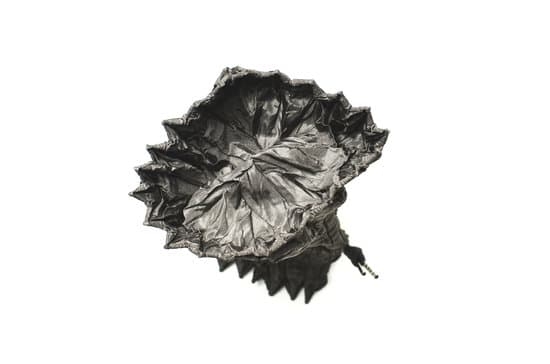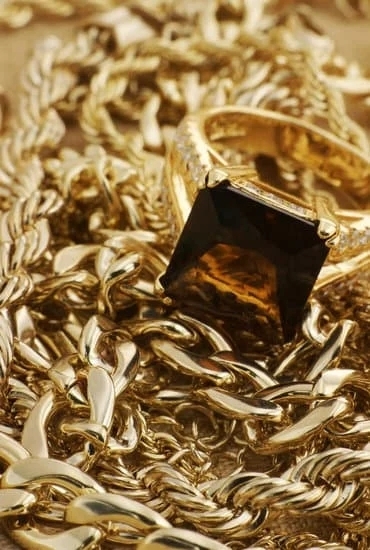The history of native American jewelry making is a captivating journey that reflects the rich cultural heritage and traditions of indigenous peoples. From early techniques and materials to the significance of jewelry in native American culture, this art form holds deep symbolism and meaning.
Over time, native American jewelry has evolved in style, with notable artisans leaving their mark on the craft. The impact of native American jewelry on contemporary fashion cannot be overlooked, and efforts to preserve and promote this tradition are ongoing.
Native American jewelry making has a long history rooted in traditional techniques and materials that have been passed down through generations. This article will explore the various aspects of this art form, from its cultural significance to its influence on modern trends. Join us as we delve into the world of native American jewelry making, appreciating its legacy and traditions while also looking forward to its continued preservation and recognition within the world of fashion and art.
Early Techniques and Materials
Native American jewelry making has a long and rich history that dates back centuries. Traditional techniques and materials were passed down through generations, resulting in the creation of stunning and culturally significant pieces. The art of Native American jewelry making reflects the diverse cultures and traditions of various Indigenous tribes, each with its own distinct style and symbolism.
Traditional Methods
The traditional methods of Native American jewelry making often involved handcrafting each piece with meticulous attention to detail. Techniques such as soldering, stamping, and overlay were commonly used to create intricate designs on silver, turquoise, coral, and other gemstones. Many tribes also utilized beadwork and quillwork to produce colorful and unique pieces of jewelry.
Materials Used
One of the most iconic materials used in Native American jewelry making is silver. This metal was introduced by Spanish colonial settlers and quickly integrated into Indigenous artistry. Additionally, turquoise holds great significance in many Native American cultures, symbolizing protection, strength, and connection to the natural world. Other materials such as shells, feathers, and animal bones were also incorporated into jewelry making, each carrying its own cultural meaning.
Symbolism and Cultural Significance
For Native American tribes, jewelry carries deep cultural significance beyond mere adornment. Each piece often reflects the tribe’s spiritual beliefs, historical events, or personal stories. Symbols such as feathers, animals, geometric patterns, and celestial motifs are prevalent in traditional Native American jewelry designs. Understanding the symbolism behind these pieces adds another layer of appreciation for their artistic value within Indigenous communities.
Overall,
Significance of Jewelry in Native American Culture
Symbolism in Native American Jewelry
In Native American culture, jewelry holds significant symbolic meaning. Each piece of jewelry is often crafted to represent aspects of nature, spirituality, and the tribal community. For example, the use of animal motifs such as birds, bears, and wolves symbolize spiritual guidance and protection. Other designs may incorporate elements from the natural world like feathers, plants, and raindrops to signify harmony with nature and the Earth.
Sacred Ceremonial Use
Jewelry has been an integral part of sacred ceremonies and rituals within Native American communities for centuries. Certain pieces are worn during traditional dances, healing ceremonies, or coming-of-age rites to symbolize individual identity within the tribe. The intricate designs and materials used in these ceremonial pieces are carefully chosen to reflect spiritual beliefs and cultural traditions.
Social and Economic Significance
Beyond its spiritual connotations, jewelry also holds social and economic significance in Native American culture. Historically, elaborate jewelry was a display of wealth and status within the community. Furthermore, certain types of jewelry were worn as trade items or for bartering purposes with neighboring tribes. Understanding the multifaceted symbolism behind Native American jewelry provides insight into the rich cultural heritage embedded within each unique piece.
Evolution of Styles
Native American jewelry making has a long and storied history, with each era contributing to the evolution of styles. The earliest techniques and materials used by Native American artisans were influenced by their natural surroundings, cultural traditions, and spiritual beliefs. In the early days, jewelry was crafted using materials such as shells, stones, wood, copper, and silver. These materials were often adorned with intricate designs that reflected the artist’s connection to nature and their tribal heritage.
As time passed, Native American jewelry making techniques evolved alongside the introduction of new materials and tools. The arrival of European settlers in North America brought trade opportunities that allowed Native American artisans to access metals like silver and turquoise. This led to the incorporation of these materials into their designs, resulting in a fusion of traditional craftsmanship with contemporary elements.
The 20th century saw further changes in Native American jewelry styles as artists began experimenting with innovative techniques and designs. Influences from other cultures also played a role in shaping the evolution of Native American jewelry. As a result, modern collectors can observe a wide range of styles that reflect both traditional aesthetics and contemporary influences. Indeed, the history of Native American jewelry making is a testament to the resilience and adaptability of indigenous artistic traditions over time.
Famous Native American Jewelry Makers
Native American jewelry making has a long and rich history, with artisans creating stunning pieces that reflect their cultural heritage and traditions. Throughout the centuries, many talented individuals have made significant contributions to the craft, leaving behind a legacy of exceptional artistry. These famous Native American jewelry makers have not only showcased their skills and creativity but have also played a crucial role in preserving and promoting their cultural heritage through their work.
One notable figure in the history of Native American jewelry making is Charles Loloma, a Hopi artist renowned for his innovative designs and use of unconventional materials. Loloma’s work pushed the boundaries of traditional Native American jewelry, incorporating modern elements while still honoring his cultural roots. His bold and distinctive style set him apart as a groundbreaking figure in the world of Native American jewelry.
Another influential figure is Jesse Monongya, a Navajo jeweler celebrated for his exquisite craftsmanship and intricate designs. Monongya’s work often features elaborate inlay techniques, combining various gemstones and metals to create striking patterns and imagery. His attention to detail and dedication to preserving traditional techniques have earned him widespread recognition in the realm of Native American jewelry making.
In addition to these renowned artisans, there are countless other skilled individuals who have made significant contributions to Native American jewelry making, each leaving an indelible mark on the craft. Their work continues to inspire contemporary artists and collectors alike, serving as a testament to the enduring beauty and significance of Native American jewelry.
| Notable Artisan | Contribution |
|---|---|
| Charles Loloma | Innovative designs incorporating modern elements while honoring cultural roots. |
| Jesse Monongya | Exquisite craftsmanship featuring elaborate inlay techniques. |
Influence of Native American Jewelry on Contemporary Fashion
The history of Native American jewelry making has had a significant influence on contemporary fashion, with traditional designs and techniques continuing to inspire modern trends. The use of natural materials, intricate beadwork, and symbolic motifs in Native American jewelry has captivated the fashion world, leading to the incorporation of these elements into mainstream styles.
One of the most notable impacts of Native American jewelry on contemporary fashion is seen in the popularity of turquoise and silver jewelry. The vibrant blue hue of turquoise and the lustrous shine of silver have become iconic features associated with Southwestern-inspired fashion. From bohemian chic to high-end designer collections, Native American-inspired jewelry has permeated the fashion industry, reflecting an appreciation for the beauty and craftsmanship of indigenous artistry.
Furthermore, the cultural significance and spiritual symbolism imbued in Native American jewelry have also made their mark on modern trends. The use of symbols such as feathers, animals, and geometric patterns not only adds visual interest to accessories but also carries deeper meanings that resonate with individuals seeking to connect with ancient traditions. This embrace of cultural heritage through jewelry demonstrates a growing awareness and respect for the history and artistic legacy of Native American communities.
| Native American Jewelry Trends | Impact on Contemporary Fashion |
|---|---|
| Turquoise and Silver | Iconic features associated with Southwestern-inspired fashion |
| Cultural Symbolism | Embrace of ancient traditions and spiritual meanings in modern accessories |
Preservation of Tradition
Native American jewelry has a long and rich history, with traditions that have been passed down through generations. Efforts to preserve and promote the legacy of Native American jewelry making are crucial in maintaining the cultural significance and artistry of these pieces. Through various initiatives and organizations, there is a continued commitment to ensuring that the traditional techniques and materials used in creating Native American jewelry are not lost over time.
Efforts to preserve the tradition of Native American jewelry making often involve collaborations with tribal communities and artisans to ensure that their knowledge and expertise are valued and upheld. These partnerships can also help in providing economic opportunities for Native American artists, allowing them to continue practicing their craft while supporting their communities.
In addition to supporting individual artisans, there are also educational programs and workshops dedicated to teaching the next generation about the history of Native American jewelry making. By passing on these traditions, young artists can continue creating authentic pieces that honor their heritage while adapting to contemporary styles.
Some key initiatives focused on preserving the tradition of Native American jewelry making include:
- Tribal outreach programs aimed at connecting artisans with resources and opportunities for showcasing their work
- Cultural preservation organizations dedicated to documenting and sharing the history of Native American jewelry making
- Collaborative projects between established artists and emerging talents within tribal communities
These efforts play an essential role in ensuring that the legacy of Native American jewelry making continues to thrive, allowing future generations to appreciate the beauty and significance of these timeless pieces.
Appreciating Native American Jewelry
In conclusion, the history of Native American jewelry making is a testament to the rich cultural heritage and artistic traditions of Indigenous peoples. From early techniques using natural materials to the evolution of styles over time, Native American jewelry holds deep significance and symbolism within Indigenous cultures. As society continues to appreciate and recognize the importance of preserving these traditions, it is crucial to understand how to properly collect and care for authentic Native American jewelry pieces.
As collectors and enthusiasts seek out authentic Native American jewelry, it is important to do thorough research and purchase from reputable sources. Understanding the significance of different symbols and materials used in traditional pieces can enhance one’s appreciation for the artistry behind each creation. Additionally, caring for these unique pieces involves proper storage, cleaning, and handling to ensure they remain in pristine condition for generations to come.
The influence of Native American jewelry on contemporary fashion has also sparked a renewed interest in these timeless designs. However, it is essential to respect and honor the history and cultural significance of these pieces when integrating them into modern trends. By promoting awareness and understanding of the history of Native American jewelry making, we can contribute to the preservation and celebration of this important aspect of Indigenous heritage.
Frequently Asked Questions
Which Native American Tribes Made Jewelry?
Several Native American tribes have a tradition of making jewelry, including the Navajo, Hopi, Zuni, Pueblo, and Apache. These tribes are known for their distinctive styles and use of materials in creating beautiful pieces.
What Are the Two Categories of Native American Jewelry?
The two main categories of Native American jewelry are traditional and contemporary. Traditional jewelry often reflects the cultural and spiritual beliefs of the tribe, while contemporary pieces may incorporate modern influences or techniques.
Why Did the Navajo Tribe Make Jewelry?
The Navajo tribe has a long history of making jewelry that is intricately tied to their culture and traditions. For the Navajo people, jewelry is not just an art form but also holds deep symbolic and ceremonial significance. It is seen as a way to connect with their heritage and preserve their identity.

Welcome to my jewelry blog! My name is Sarah and I am the owner of this blog.
I love making jewelry and sharing my creations with others.
So whether you’re someone who loves wearing jewelry yourself or simply enjoys learning about it, be sure to check out my blog for insightful posts on everything related to this exciting topic!





